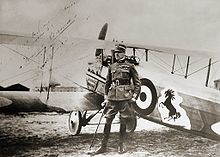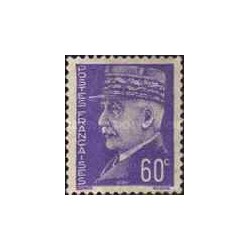- جدید
- ناموجود



توجه : درج کد پستی و شماره تلفن همراه و ثابت جهت ارسال مرسوله الزامیست .
توجه:حداقل ارزش بسته سفارش شده بدون هزینه پستی می بایست 100000 ریال باشد .
توجه : جهت برخورداری از مزایای در نظر گرفته شده برای مشتریان لطفا ثبت نام نمائید.
| Francesco Baracca | |
|---|---|

Count Francesco Baracca, standing by his SPAD XIII fighter with the prancing horse logo that later became the emblem of Ferrari
|
|
| Born | 9 May 1888 Lugo di Romagna, Italy |
| Died | 19 June 1918 (aged 30) Vicinity of Mount Montello, Italy |
| Allegiance | Italy |
| Service/branch | Cavalry; aviation |
| Years of service | 1907 – 1918 |
| Rank | Major |
| Unit | 1a Squadriglia, 70a Squadriglia, 91a Squadriglia |
| Awards | Gold Medal of Military Valor, three Silver Medal of Military Valor, British Military Cross, French Croix de Guerre, Belgian Order of the Crown |

Count Francesco Baracca (9 May 1888 – 19 June 1918) was Italy's top fighter ace of World War I. He was credited with 34 aerial victories. The emblem he wore side by side on his plane of a black horse prancing on its two rear feet inspired that of Ferrari.
Baracca was born in Lugo di Romagna. He was the son of a wealthy landowner. The younger Baracca initially studied at a private school in Florence before entering the Military Academy of Modena in October 1907. As he had become a passionate equestrian as an antidote to classroom boredom, he became a cavalryman with the prestigious Piemonte Reale Cavalleria Regiment upon his commissioning in 1910. His first duty station allowed him to attend concerts and opera in Rome, as well as pursuing hunting and equestrian competitions; he gained some fame in the latter. This little idyll was spoiled by orders to a small town in central Italy. Baracca then became interested in aviation and learned to fly at Reims, France, receiving his pilot's license on 9 July 1912.[1] He then served with the Battaglione Aviatori and in 1914 with the 5th and 6th Squadriglie.[citation needed]
During the months between the outbreak of World War I and Italy's entry into the war, there was intense political controversy in Italy between pro-war and pro-peace factions. Baracca remained aloofly neutral, but ready to serve his nation. After Italy's entry into the war on the Entente side in May 1915, he was sent to Paris to convert to Nieuport two-seaters. Upon his return in July, he was assigned to the 8a Squadriglia Nieuport. The Nieuport 10s that equipped this squadron were almost useless against Austro-Hungarian raids; they were too slow, with too slow a rate of climb, to bring the intruders to battle with any regularity. The frustrated Italian pilots even resorted to leaving their observers ground-bound in attempts to improve performance, to little avail. On those rare occasions when battle was joined, the Nieuports' guns usually jammed. Renaming the unit to 1a Squadriglia Caccia on 1 December 1915 did nothing to solve the problems.[2]
The Nieuport 11 single-seat fighter with Lewis guns entered service in April 1916, and on 7 April, flying this new fighter, Baracca scored his first victory, holing the fuel tank of an Austrian Hansa-Brandenburg C.I and wounding its two-man crew. This was also Italy's first aerial victory in the war.[3][4] This first victory featured his favorite manoeuvre, which was to zoom in unseen behind and below an enemy and fire his machine gun from pistol range.[5]
It was around this time that Baracca adopted as a personal emblem a black prancing horse on his Nieuport 17, in tribute to his former cavalry regiment.[5] This prompted some to call him, "The Cavalier of the Skies".[citation needed] Flying the Nieuport 17 and then, from March 1917, the SPAD VII, he scored both individually, and in combination with other Italian aces.[6][7]
Baracca's second victory was an Austrian Lohner over Gorizia on 23 April 1916. After his third victory, he transferred to 70a Squadriglia.[4] Promoted to Capitano, Baracca remained with the unit until, with 9 victories, he transferred to the newly formed 91st Squadriglia, known as the "Squadron of the Aces", on 1 May 1917. By that time, his ever increasing list of victories had made him nationally famous. While he initially dodged the responsibilities and paperwork that went with command, he finally settled into heading the squadron.[5]
Baracca's friend Fulco Ruffo di Calabria nearly ended Baracca's career—and life—in June 1917. Ruffo di Calabria burst out of a cloud firing in a head-on pass at an enemy airplane, and barely missed Baracca. Later, on the ground, Baracca assured his companion, "Dear Fulco, next time, if you want to shoot me down, aim a couple of meters to the right. Now let's go for a drink and not talk of it any more!"[8]
Baracca temporarily upgraded to a Spad XIII in October 1917, using it to achieve a couple of victories on the 22nd, and on a win scored on a joint sortie with Pier Piccio on the 25th. That night he wrote: "I had my SPAD shot up and its longeron broken into pieces by enemy machine gun fire in an aerial dogfight." As a result, Baracca returned to the more manoeuvrable Spad VII, remarking, "It doesn't matter if the VII is equipped with a single gun. Provided you are a good fighter, a single gun is just enough." Nevertheless, after repair, he sometimes returned to the Spad XIII.[9]
A dedicated fighter pilot, Baracca found life away from the front unbearable and remained as much as possible with the 91st Squadriglia, even after being promoted to Maggiore in November 1917.[citation needed] Baracca remained a modest, sensitive man conscious of his duty and compassionate to both his squadron comrades and to his defeated enemies. He would try to visit his victims in hospital afterwards, to pay his respects, or he would place a wreath on the grave of those he killed.[5] He had raised his score to 30 by the end of 1917.[7]
Soon afterwards, Baracca, Piccio, and Ruffo di Calabria were tasked with evaluating the new Ansaldo A.1 Balilla fighter. Baracca was personally decorated by King Victor Emmanuel III at La Scala at this time. It was March 1918 before Baracca convinced his superiors that he belonged back at the front. He was not long back before he found himself in a situation similar to the previous late October: his squadron was forced to withdraw by enemy advances on 27 April. It was about this time that he adopted the griffin as an insignia for the planes in his unit. Most of his pilots adopted it, though some still flaunted the prancing stallion as a gesture of respect for their commander.[10]
Baracca saw little action in 1918, but he added more victories, for a total of 34, before failing to return from a strafing mission on the Montello (hill) area on 19 June.[4] The Italians were taking advantage of their air supremacy to fly treetop ground attack missions into a storm of small arms fire. In the 0630 troop support mission, Baracca and rookie pilot Tenente Franco Osnago were hit by ground fire and split from one another. A few minutes later, both Baracca's home airfield and Osnago saw a burning airplane fall.[11] According to other sources, Baracca had left Osnago to provide him with top cover as he dived on the enemy trenches. Osnago lost sight of his commander, then he saw something burning in a nearby valley.[12] Some days later, on 24 June, after an Austro-Hungarian retreat, Baracca's remains were recovered from where they lay, four meters from the burnt remnants of his Spad VII.[11] A monument in his memory was later built on the site. Osnago, Ferruccio Ranza, and a journalist named Garinei retrieved his body for the large funeral that was held in his home town of Lugo.[13]

His body, when found, reportedly bore the marks of a bullet to the head. In his hand, he held a pistol, leading to suspicions that he elected to take his own life rather than die in a crash or be taken prisoner.[14] An Austrian pilot reportedly claimed to have shot him down in combat. Both these theories are unsupported by firm evidence and the most accepted version is that Baracca was hit by ground-fire.[11] It should, however, be noted that research in Austro-Hungarian records indicates that he was killed by the gunner of an Austrian two-seater while attacking from above and behind.[15] Ltn Arnold Barwig in Phönix C.I 121.17, piloted by Zgsf Max Kauer, claimed to have shot down the Italian ace.[12] The Austrian crew also photographed the shot-down aeroplane and noted time and place of engagement.[citation needed]
Baracca's total of 34 victory claims can largely be verified from known Austro-Hungarian losses and surviving military records, establishing the Italian as one of the highest scoring Allied pilots during the conflict.
Many roads in Italy are named after Baracca. The airport of Bolzano, a city in the province of South Tyrol, the Roma-Centocelle Italian Air Force base, and the Lugo di Romagna air field are all named after Baracca.[citation needed]
In later years, Baracca's mother presented his prancing stallion emblem, the Cavallino Rampante, to Enzo Ferrari. The prancing horse has been the official symbol of the Scuderia Ferrari racing team since 1929, and of Ferrari automobiles since they began manufacture.[11]
تشکر نظر شما نمی تواند ارسال شود
گزارش کردن نظر
گزارش ارسال شد
گزارش شما نمی تواند ارسال شود
بررسی خود را بنویسید
نظر ارسال شد
نظر شما نمی تواند ارسال شود

check_circle
check_circle















